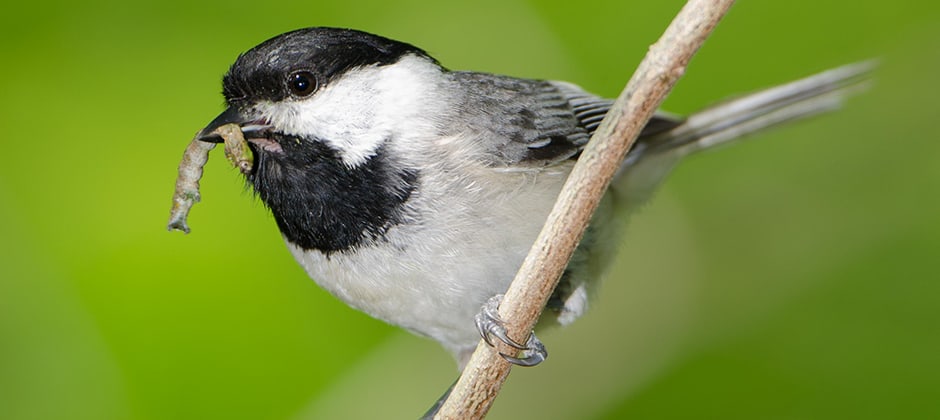Share this article
Bird declines tied to fewer insects
Some studies have documented insect declines. Others have documented bird declines. But scientists hadn’t connected the two — until recently.
In a study published in Ornithological Applications, researchers found that declines in native plants — and the resulting drop in insects — may be causing the number of terrestrial, insectivorous birds to fall.
“Invasive species have penetrated ecosystems and replaced native plants just about everywhere. Human-dominated landscapes make up a huge area,” said Doug Tallamy, a professor of entomology and wildlife ecology at the University of Delaware who conducted the study with his University of Delaware co-author Greg Shriver. “When we allow that to happen, it decreases the insect populations our birds need.”
Recent research has shown that the U.S. and Canada have lost 39% of their birds in the last 50 years. Ninety percent of them were terrestrial birds that require insects to eat and feed their young.
With that in mind, Tallamy and Shriver classified birds known to be declining — based on the Breeding Bird Survey — into two groups: those that require insects and those that don’t. They found that in the last 50 years, birds that don’t need insects actually gained about 26 million individuals. Species that require insects, however, lost an average of 2.9 billion individuals.
In reviewing previous research, they discovered that populations of insectivorous birds fluctuate with the supply of prey, but their options can be limited. Caterpillars, they found, are particularly important, helping fill the birds’ fat reserves on their spring migrations.

A white-eyed vireo (Vireo griseus) feeds its nestling a caterpillar. Credit: Doug Tallamy
“The only thing that balances all of risks and costs of migration is the huge benefit of coming up to North America to reproduce,” Tallamy said. “In temperate zone springtime, there’s a giant flush of green leaves that doesn’t appear in the tropics since it’s less seasonal there. Along with the flush of leaves comes caterpillars.”
Insects don’t do as well on nonnative plants, Tallamy said, so as the human footprint expands, their numbers are declining. Recent research he was involved in suggests caterpillars make up the bulk of Carolina chickadees’ (Poecile carolinensis) diets, and it takes tens of thousands of caterpillars to feed just one clutch of nestlings.
“It’s no wonder the birds are declining,” he said. “We are not creating landscapes that generate that number of caterpillars.”
Increasing the use of native plants in landscaping can help reverse the trend, Tallamy said. “We need a happy compromise that shifts us from a majority of nonnatives to a majority of natives in our landscapes,” he said. Oaks can be particularly effective, hosting hundreds of species of native insects that birds need.
Tallamy launched an initiative called Homegrown National Park to encourage people to devote less of their yards to grass and more to native plants in an effort to create 20 million acres of conservation area.
“We’re really trying to convince the public that if you own a piece of the earth, you have a responsibility of being a steward,” he said. “We can’t ignore private property when doing conservation.”
Header Image: Researchers say caterpillars are one of the most important food sources for insectivorous birds, but they are declining. Credit: Doug Tallamy








